This site uses cookies as defined in our Cookie Policy, by continuing to use this site you agree to their use.
Continue
| Arrive | Depart | ||||||
| 26th26 | OctOct | 202525 | Piraeus, Greece, embark on the La Belle de L'Adriatique | 18:00 | |||
| It's no wonder that all roads lead to the fascinating and maddening metropolis of Athens. Lift your eyes 200 feet above the city to the Parthenon, its honey-color marble columns rising from a massive limestone base, and you behold architectural perfection that has not been surpassed in 2,500 years. But, today, this shrine of classical form dominates a 21st-century boomtown. To experience Athens—Athína in Greek—fully is to understand the essence of Greece: ancient monuments surviving in a sea of cement, startling beauty amid the squalor, tradition juxtaposed with modernity. Locals depend on humor and flexibility to deal with the chaos; you should do the same. The rewards are immense. Although Athens covers a huge area, the major landmarks of the ancient Greek, Roman, and Byzantine periods are close to the modern city center. You can easily walk from the Acropolis to many other key sites, taking time to browse in shops and relax in cafés and tavernas along the way. From many quarters of the city you can glimpse "the glory that was Greece" in the form of the Acropolis looming above the horizon, but only by actually climbing that rocky precipice can you feel the impact of the ancient settlement. The Acropolis and Filopappou, two craggy hills sitting side by side; the ancient Agora (marketplace); and Kerameikos, the first cemetery, form the core of ancient and Roman Athens. Along the Unification of Archaeological Sites promenade, you can follow stone-paved, tree-lined walkways from site to site, undisturbed by traffic. Cars have also been banned or reduced in other streets in the historical center. In the National Archaeological Museum, vast numbers of artifacts illustrate the many millennia of Greek civilization; smaller museums such as the Goulandris Museum of Cycladic Art Museum and the Byzantine and Christian Museum illuminate the history of particular regions or periods. Athens may seem like one huge city, but it is really a conglomeration of neighborhoods with distinctive characters. The Eastern influences that prevailed during the 400-year rule of the Ottoman Empire are still evident in Monastiraki, the bazaar area near the foot of the Acropolis. On the northern slope of the Acropolis, stroll through Plaka (if possible by moonlight), an area of tranquil streets lined with renovated mansions, to get the flavor of the 19th-century's gracious lifestyle. The narrow lanes of Anafiotika, a section of Plaka, thread past tiny churches and small, color-washed houses with wooden upper stories, recalling a Cycladic island village. In this maze of winding streets, vestiges of the older city are everywhere: crumbling stairways lined with festive tavernas; dank cellars filled with wine vats; occasionally a court or diminutive garden, enclosed within high walls and filled with magnolia trees and the flaming trumpet-shaped flowers of hibiscus bushes. Formerly run-down old quarters, such as Thission, Gazi and Psirri, popular nightlife areas filled with bars and mezedopoleia (similar to tapas bars), are now in the process of gentrification, although they still retain much of their original charm, as does the colorful produce and meat market on Athinas. The area around Syntagma Square, the tourist hub, and Omonia Square, the commercial heart of the city about 1 km (½ mi) northwest, is distinctly European, having been designed by the court architects of King Otho, a Bavarian, in the 19th century. The chic shops and bistros of ritzy Kolonaki nestle at the foot of Mt. Lycabettus, Athens's highest hill (909 feet). Each of Athens's outlying suburbs has a distinctive character: in the north is wealthy, tree-lined Kifissia, once a summer resort for aristocratic Athenians, and in the south and southeast lie Glyfada, Voula, and Vouliagmeni, with their sandy beaches, seaside bars, and lively summer nightlife. Just beyond the city's southern fringes is Piraeus, a bustling port city of waterside fish tavernas and Saronic Gulf views. Boarding. | |||||||
| 27th27 | OctOct | 202525 | Piraeus, Greece | 12:00 | |||
| It's no wonder that all roads lead to the fascinating and maddening metropolis of Athens. Lift your eyes 200 feet above the city to the Parthenon, its honey-color marble columns rising from a massive limestone base, and you behold architectural perfection that has not been surpassed in 2,500 years. But, today, this shrine of classical form dominates a 21st-century boomtown. To experience Athens—Athína in Greek—fully is to understand the essence of Greece: ancient monuments surviving in a sea of cement, startling beauty amid the squalor, tradition juxtaposed with modernity. Locals depend on humor and flexibility to deal with the chaos; you should do the same. The rewards are immense. Although Athens covers a huge area, the major landmarks of the ancient Greek, Roman, and Byzantine periods are close to the modern city center. You can easily walk from the Acropolis to many other key sites, taking time to browse in shops and relax in cafés and tavernas along the way. From many quarters of the city you can glimpse "the glory that was Greece" in the form of the Acropolis looming above the horizon, but only by actually climbing that rocky precipice can you feel the impact of the ancient settlement. The Acropolis and Filopappou, two craggy hills sitting side by side; the ancient Agora (marketplace); and Kerameikos, the first cemetery, form the core of ancient and Roman Athens. Along the Unification of Archaeological Sites promenade, you can follow stone-paved, tree-lined walkways from site to site, undisturbed by traffic. Cars have also been banned or reduced in other streets in the historical center. In the National Archaeological Museum, vast numbers of artifacts illustrate the many millennia of Greek civilization; smaller museums such as the Goulandris Museum of Cycladic Art Museum and the Byzantine and Christian Museum illuminate the history of particular regions or periods. Athens may seem like one huge city, but it is really a conglomeration of neighborhoods with distinctive characters. The Eastern influences that prevailed during the 400-year rule of the Ottoman Empire are still evident in Monastiraki, the bazaar area near the foot of the Acropolis. On the northern slope of the Acropolis, stroll through Plaka (if possible by moonlight), an area of tranquil streets lined with renovated mansions, to get the flavor of the 19th-century's gracious lifestyle. The narrow lanes of Anafiotika, a section of Plaka, thread past tiny churches and small, color-washed houses with wooden upper stories, recalling a Cycladic island village. In this maze of winding streets, vestiges of the older city are everywhere: crumbling stairways lined with festive tavernas; dank cellars filled with wine vats; occasionally a court or diminutive garden, enclosed within high walls and filled with magnolia trees and the flaming trumpet-shaped flowers of hibiscus bushes. Formerly run-down old quarters, such as Thission, Gazi and Psirri, popular nightlife areas filled with bars and mezedopoleia (similar to tapas bars), are now in the process of gentrification, although they still retain much of their original charm, as does the colorful produce and meat market on Athinas. The area around Syntagma Square, the tourist hub, and Omonia Square, the commercial heart of the city about 1 km (½ mi) northwest, is distinctly European, having been designed by the court architects of King Otho, a Bavarian, in the 19th century. The chic shops and bistros of ritzy Kolonaki nestle at the foot of Mt. Lycabettus, Athens's highest hill (909 feet). Each of Athens's outlying suburbs has a distinctive character: in the north is wealthy, tree-lined Kifissia, once a summer resort for aristocratic Athenians, and in the south and southeast lie Glyfada, Voula, and Vouliagmeni, with their sandy beaches, seaside bars, and lively summer nightlife. Just beyond the city's southern fringes is Piraeus, a bustling port city of waterside fish tavernas and Saronic Gulf views. Included excursions in the morning: Athens and the Acropolis. In the afternoon, we'll pass through the Corinth Canal. | |||||||
| 28th28 | OctOct | 202525 | At Sea | ||||
| 29th29 | OctOct | 202525 | Igoumenítsa, Greece | 08:00 | 18:00 | ||
| Included full-day excursion: The Meteora (approximately 5 hours of round-trip travel lunch is included).We'll begin to cruise to Dubrovnik. | |||||||
| 30th30 | OctOct | 202525 | Dubrovnik, Croatia | 18:00 | |||
| Nothing can prepare you for your first sight of Dubrovnik. Lying 216 km (135 miles) southeast of Split and commanding a jaw-dropping coastal location, it is one of the world's most beautiful fortified cities. Its massive stone ramparts and fortress towers curve around a tiny harbor, enclosing graduated ridges of sun-bleached orange-tiled roofs, copper domes, and elegant bell towers. Your imagination will run wild picturing what it looked like seven centuries ago when the walls were built, without any suburbs or highways around it, just this magnificent stone city rising out of the sea.In the 7th century AD, residents of the Roman city Epidaurum (now Cavtat) fled the Avars and Slavs of the north and founded a new settlement on a small rocky island, which they named Laus, and later Ragusa. On the mainland hillside opposite the island, the Slav settlement called Dubrovnik grew up. In the 12th century the narrow channel separating the two settlements was filled in (now the main street through the Old Town, called Stradun), and Ragusa and Dubrovnik became one. The city was surrounded by defensive walls during the 13th century, and these were reinforced with towers and bastions in the late 15th century.From 1358 to 1808 the city thrived as a powerful and remarkably sophisticated independent republic, reaching its golden age during the 16th century. In 1667 many of its splendid Gothic and Renaissance buildings were destroyed by an earthquake. The defensive walls survived the disaster, and the city was rebuilt in baroque style.Dubrovnik lost its independence to Napoléon in 1808, and in 1815 passed to Austria-Hungary. During the 20th century, as part of Yugoslavia, the city became a popular tourist destination, and in 1979 it was listed as a UNESCO World Heritage Site. During the war for independence, it came under heavy siege. Thanks to careful restoration, few traces of damage remain; however, there are maps inside the Pile and Ploče Gates illustrating the points around the city where damage was done. It’s only when you experience Dubrovnik yourself that you can understand what a treasure the world nearly lost We'll spend the day cruising.Included excursion: Dubrovnik by night.Festive gala evening. | |||||||
| 31st31 | OctOct | 202525 | Dubrovnik, Croatia, disembark the La Belle de L'Adriatique | ||||
| Nothing can prepare you for your first sight of Dubrovnik. Lying 216 km (135 miles) southeast of Split and commanding a jaw-dropping coastal location, it is one of the world's most beautiful fortified cities. Its massive stone ramparts and fortress towers curve around a tiny harbor, enclosing graduated ridges of sun-bleached orange-tiled roofs, copper domes, and elegant bell towers. Your imagination will run wild picturing what it looked like seven centuries ago when the walls were built, without any suburbs or highways around it, just this magnificent stone city rising out of the sea.In the 7th century AD, residents of the Roman city Epidaurum (now Cavtat) fled the Avars and Slavs of the north and founded a new settlement on a small rocky island, which they named Laus, and later Ragusa. On the mainland hillside opposite the island, the Slav settlement called Dubrovnik grew up. In the 12th century the narrow channel separating the two settlements was filled in (now the main street through the Old Town, called Stradun), and Ragusa and Dubrovnik became one. The city was surrounded by defensive walls during the 13th century, and these were reinforced with towers and bastions in the late 15th century.From 1358 to 1808 the city thrived as a powerful and remarkably sophisticated independent republic, reaching its golden age during the 16th century. In 1667 many of its splendid Gothic and Renaissance buildings were destroyed by an earthquake. The defensive walls survived the disaster, and the city was rebuilt in baroque style.Dubrovnik lost its independence to Napoléon in 1808, and in 1815 passed to Austria-Hungary. During the 20th century, as part of Yugoslavia, the city became a popular tourist destination, and in 1979 it was listed as a UNESCO World Heritage Site. During the war for independence, it came under heavy siege. Thanks to careful restoration, few traces of damage remain; however, there are maps inside the Pile and Ploče Gates illustrating the points around the city where damage was done. It’s only when you experience Dubrovnik yourself that you can understand what a treasure the world nearly lost Disembarkation. | |||||||
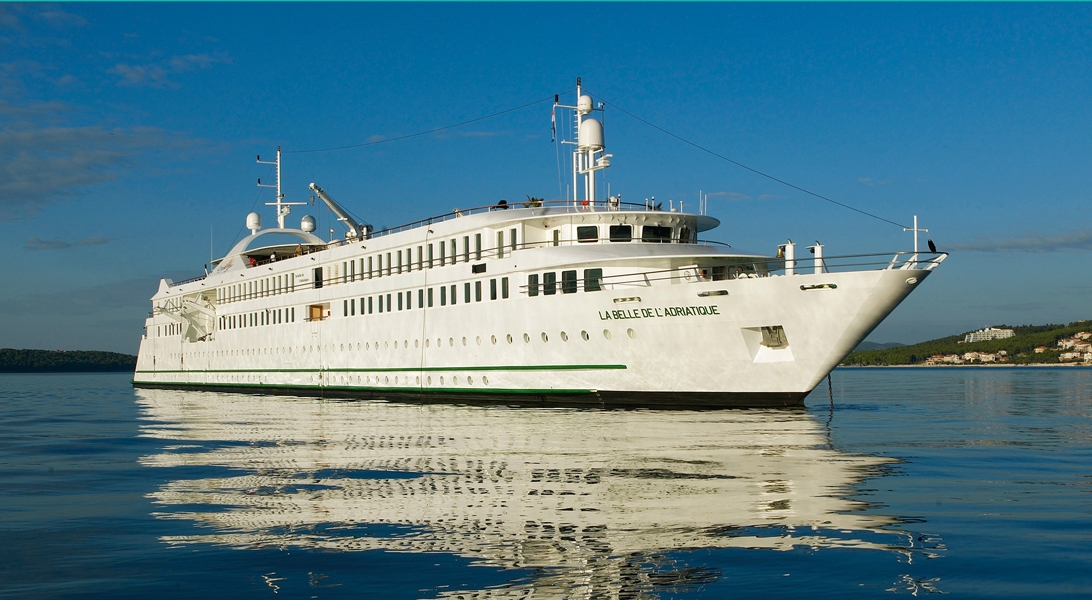



The images shown are for illustration purposes only and may not be an exact representation of what you find on the ship.
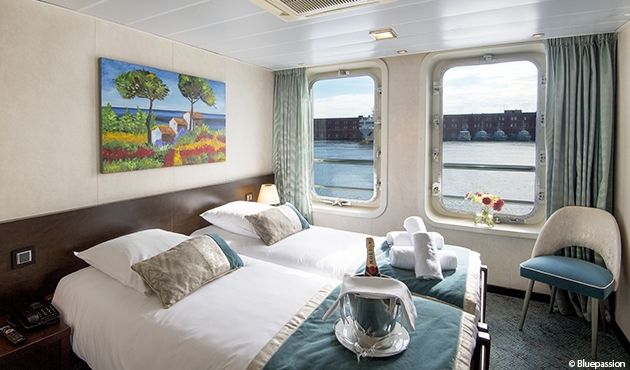
| Grade Code | From | To | |
| C_GLS_PIH | Category C (2 Adjustable Twin Beds, Portholes, First Deck) | £1,073 | £1,073 |
| B_GLS_PIH | Category B (2 Adjustable Twin Beds, Portholes, First Deck) | £1,107 | £1,107 |
| A_GLS_PIH | Category A (2 Adjustable Twin Beds, Portholes, First Deck) | £1,164 | £1,164 |
The cabins available on the Lower Deck are furnished with optional twin or double beds. All cabins have portholes and are equipped with an ensuite shower room, a hair dryer, satellite television, radio and an in-room safe.
Ensuring your comfort air-conditioning is available in the Summer and central heating for the Winter.
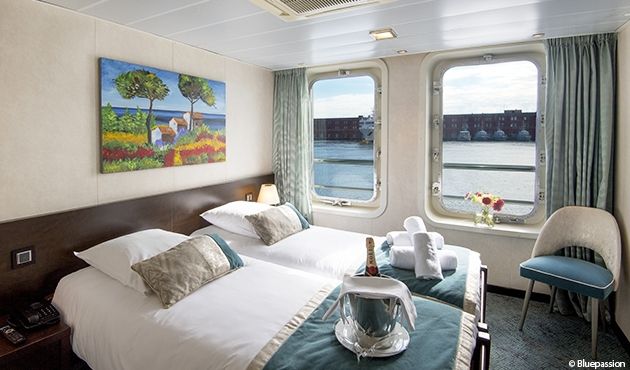
| Grade Code | From | To | |
| C_GLS_PPH | Category C (2 Adjustable Twin Beds, Portholes, Main Deck) | £1,249 | £1,249 |
| B_GLS_PPH | Category B (2 Adjustable Twin Beds, Portholes, Main Deck) | £1,283 | £1,283 |
| A_GLS_PPH | Category A (2 Adjustable Twin Beds, Portholes, Main Deck) | £1,340 | £1,340 |
The cabins available on the Reception Deck are furnished with optional twin or double beds. All cabins have portholes and are equipped with an ensuite shower room, a hair dryer, satellite television, radio and an in-room safe.
Ensuring your comfort air-conditioning is available in the Summer and central heating for the Winter.
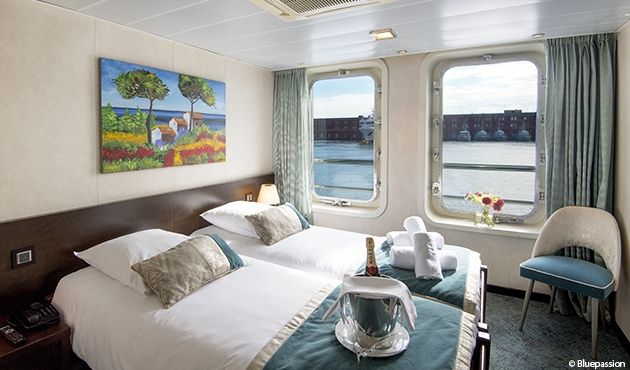
| Grade Code | From | To | |
| C_GLS_PE | Category C (2 Adjustable Twin Beds, Boarding Deck) | £1,296 | £1,296 |
| B_GLS_PE | Category B (2 Adjustable Twin Beds, Boarding Deck) | £1,330 | £1,330 |
| A_GLS_PE | Category A (2 Adjustable Twin Beds, Boarding Deck) | £1,387 | £1,387 |
The cabins available on the Reception Deck are furnished with optional twin or double beds. All cabins have large fixed windows from which you can enjoy the oceanic views and are equipped with an ensuite shower room, a hair dryer, satellite television, radio and an in-room safe.
Ensuring your comfort air-conditioning is available in the Summer and central heating for the Winter.
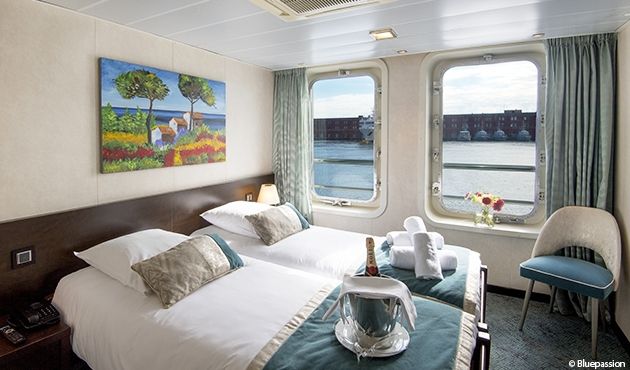
| Grade Code | From | To | |
| C_GLS_PS | Category C (2 Adjustable Twin Beds, Upper Deck) | £1,367 | £1,367 |
| C_DBL_PS | Category C (Double Bed, Upper Deck) | £1,367 | £1,367 |
| B_GLS_PS | Category B (2 Adjustable Twin Beds, Upper Deck) | £1,401 | £1,401 |
| B_PM2_PS | Category B (Disabled Cabin with 2 Single Beds) | £1,401 | £1,401 |
| A_GLS_PS | Category A (2 Adjustable Twin Beds, Upper Deck) | £1,458 | £1,458 |
The cabins available on the Upper Deck are furnished with optional twin or double beds. All cabins have large fixed windows from which you can enjoy the oceanic views and are equipped with an ensuite shower room, a hair dryer, satellite television, radio and an in-room safe.
Ensuring your comfort air-conditioning is available in the Summer and central heating for the Winter.
There is also a single cabin and one cabin suitable for passengers with reduced mobility on this deck.
AMENITIES
Please note that there is no laundry service on board the ship.
The images shown are for illustration purposes only and may not be an exact representation of what you find on the ship.
The images shown are for illustration purposes only and may not be an exact representation of what you find on the ship.
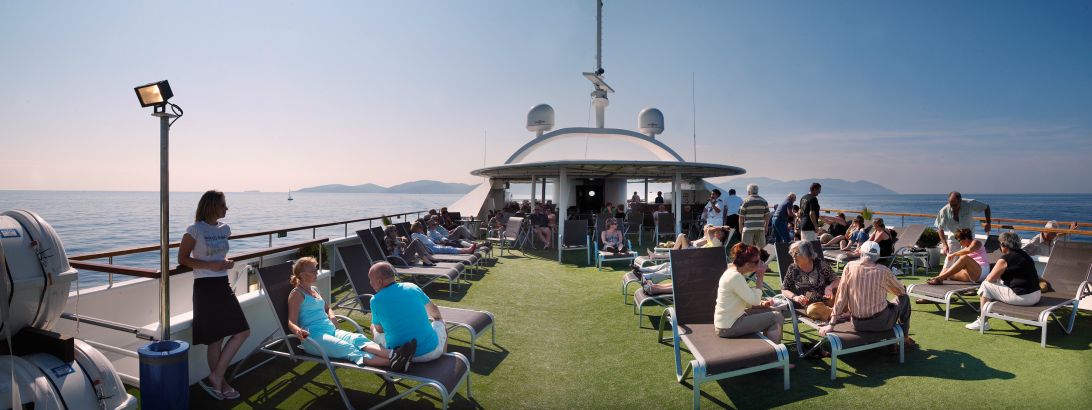
Take advantage of the sun deck to relax! It is equipped with chairs and deckchairs, allowing you to cool off while enjoying a panoramic view of the magnificent landscapes.
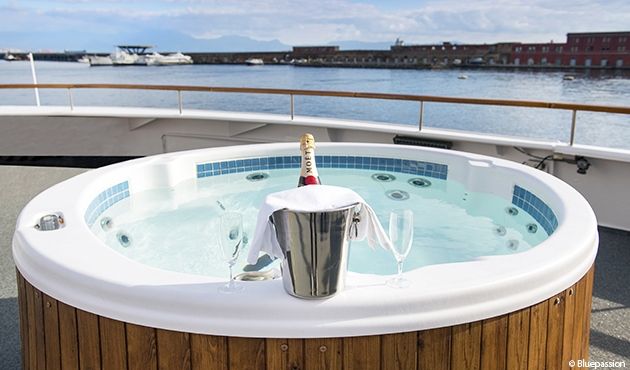
Rest and relax in the Jacuzzi while enjoying the beautiful landscapes.
The images shown are for illustration purposes only and may not be an exact representation of what you find on the ship.
The images shown are for illustration purposes only and may not be an exact representation of what you find on the ship.
| 5 nights aboard the La Belle de L'Adriatique | |||
| All meals included | |||
| Drinks included with meals & at the bar | |||
| Gala dinner & evening welcome cocktail | |||
| Free Wi-Fi in lounge & bar | |||
| Headsets included for excursions | |||
| Travel Assistance & Repatriation Insurance | |||
| Port Taxes and Fees | |||
 | ABTA and ATOL Protection* | ||
Date 26th Oct 2025 |
Nts 5 |
Oceanview £1,073pp |
Date 26th Oct 2025 |
Nts 5 |
Oceanview £1,073pp |
| Oceanview staterooms from | £1,073pp | ||
| A_GLS_PE | Category A (2 Adjustable Twin Beds, Boarding Deck) | £1,387pp | |
| A_GLS_PIH | Category A (2 Adjustable Twin Beds, Portholes, First Deck) | £1,164pp | |
| A_GLS_PPH | Category A (2 Adjustable Twin Beds, Portholes, Main Deck) | £1,340pp | |
| A_GLS_PS | Category A (2 Adjustable Twin Beds, Upper Deck) | £1,458pp | |
| B_GLS_PE | Category B (2 Adjustable Twin Beds, Boarding Deck) | £1,330pp | |
| B_GLS_PIH | Category B (2 Adjustable Twin Beds, Portholes, First Deck) | £1,107pp | |
| B_GLS_PPH | Category B (2 Adjustable Twin Beds, Portholes, Main Deck) | £1,283pp | |
| B_GLS_PS | Category B (2 Adjustable Twin Beds, Upper Deck) | £1,401pp | |
| B_PM2_PS | Category B (Disabled Cabin with 2 Single Beds) | £1,401pp | |
| C_DBL_PS | Category C (Double Bed, Upper Deck) | £1,367pp | |
| C_GLS_PE | Category C (2 Adjustable Twin Beds, Boarding Deck) | £1,296pp | |
| C_GLS_PIH | Category C (2 Adjustable Twin Beds, Portholes, First Deck) | £1,073pp | |
| C_GLS_PPH | Category C (2 Adjustable Twin Beds, Portholes, Main Deck) | £1,249pp | |
| C_GLS_PS | Category C (2 Adjustable Twin Beds, Upper Deck) | £1,367pp | |
Fusion Cruises when selling travel arrangements is a trading name of The Midcounties Co-operative Ltd. Fusion Cruises is an Accredited Body Member of Midcounties Co-operative Travel Consortium. (ABTA:P6652, ATOL:6053).
Book with Confidence. We are a Member of ABTA which means you have the benefit of ABTA’s assistance and Code of Conduct.
Some of the flights and flight-inclusive holidays on this website are financially protected by the ATOL scheme but ATOL protection does not apply to all holiday and travel services offered on this website. This website will provide you with information on the protection that applies in the case of each holiday and travel service offered before you make your booking. If you do not receive an ATOL Certificate then the booking will not be ATOL protected. If you do receive an ATOL Certificate but all parts of your trip are not listed on it, those parts will not be ATOL protected. Please see our booking conditions for information, or for more information about financial protection and the ATOL Certificate go to: www.caa.co.uk
